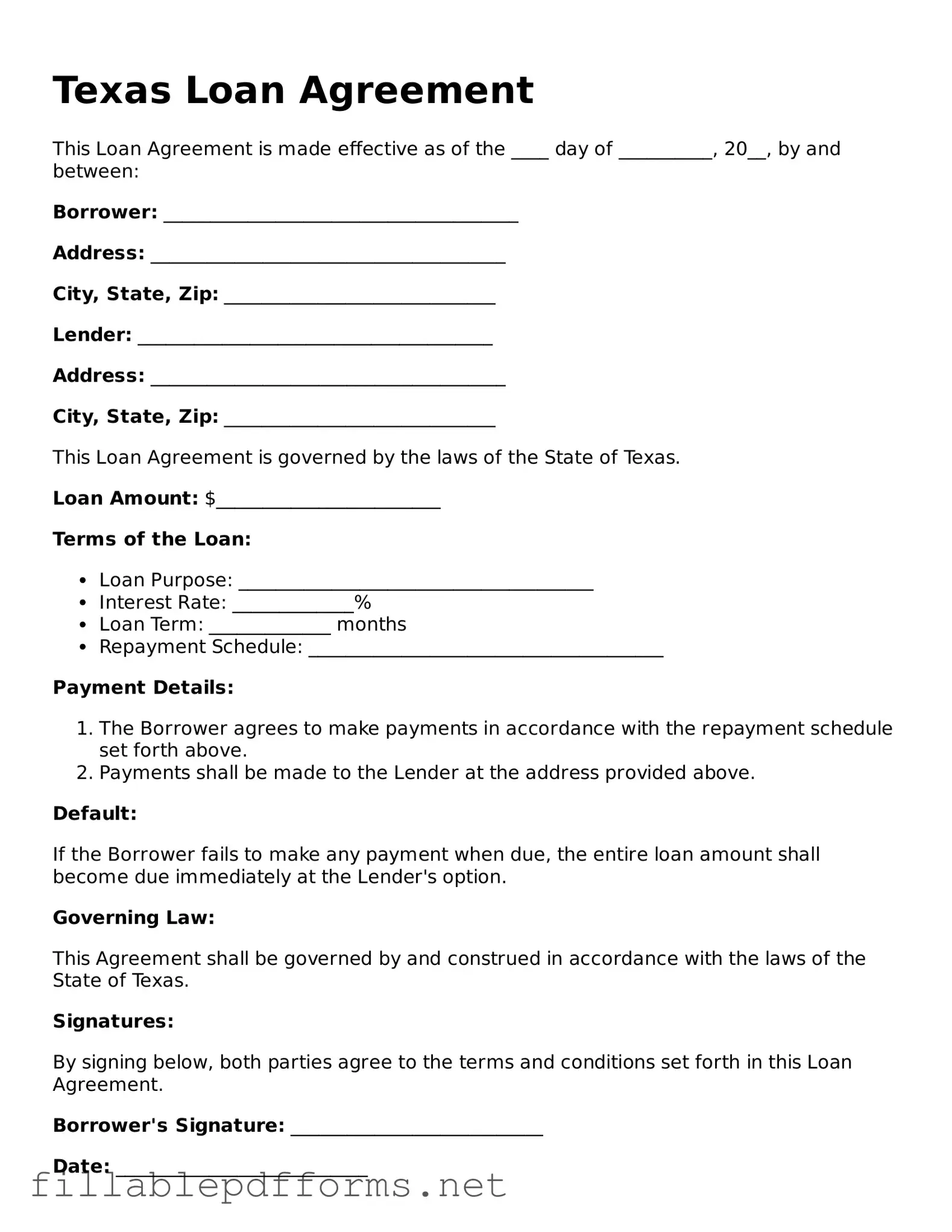Attorney-Verified Loan Agreement Form for Texas State
A Texas Loan Agreement form is a legal document that outlines the terms and conditions of a loan between a borrower and a lender. This form serves to protect the rights of both parties by clearly detailing the loan amount, repayment schedule, and any applicable interest rates. Understanding this agreement is crucial for ensuring a smooth lending process and avoiding potential disputes.
Launch Editor Here
